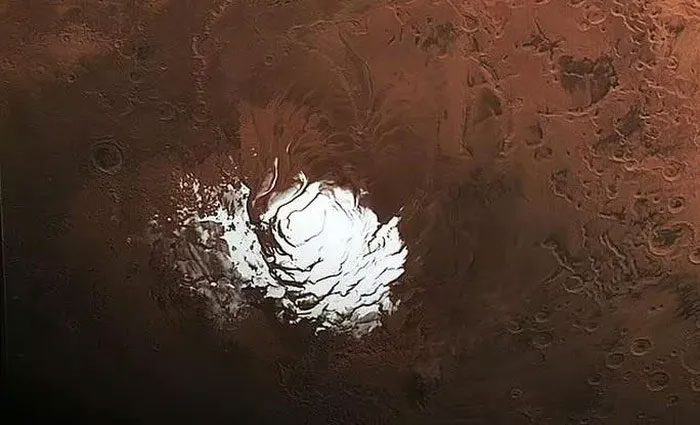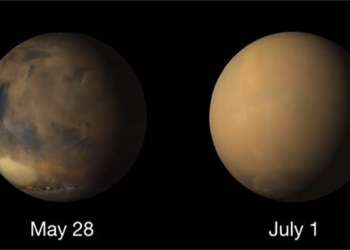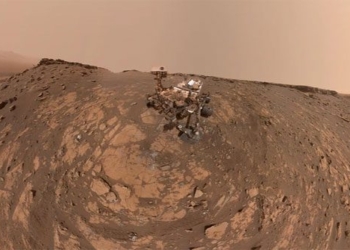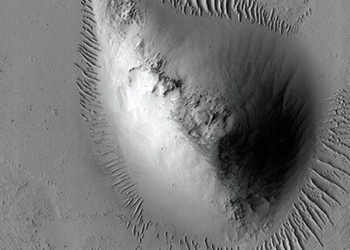A new study from the University of Texas (USA) has nearly extinguished hopes for the existence of life beneath the southern pole of Mars that scientists around the world have pursued for the past few years.
In 2018, a study suggested that beneath the southern pole of Mars there could be a warm liquid water lake, based on radar reflections observed beneath the ice cap in this region. Subsequently, many other research groups pursued this hypothesis, “scrutinizing” the area and finding additional signs that strengthened the suspicion.
However, the new work from the University of Texas, funded by NASA, claims that this is merely a “Southern Mirage” with misleading signals, according to the Daily Mail.

The southern pole of Mars may not have a water lake but instead just an optical illusion – (Photo: NASA/ESA).
They also utilized radar data collected by NASA from this region, comparing it in detail with radar signals from other areas on Mars and concluded that the unusual bright signals that had led scientists to believe there was a lake were actually just volcanic rock. Similar data has been recorded in volcanic plains found in many other locations on the Red Planet.
Additionally, they created virtual models from NASA’s data about each region on Mars, adding an imaginary ice sheet a mile thick across the surface to observe the Martian terrain in detail through a “glacial lens”. This would help compare geographical features across the planet and see how each area corresponds with others.
“For water to remain near the surface, a very salty environment and a strong heat source created in situ are necessary, but that does not align with what we know about this region,” said Dr. Cyril Grima, the lead author of the study.
Besides volcanic rock, this area may contain mineral deposits within the now-dry riverbeds. Although it is not liquid water and an oasis of life as previously hoped, researchers believe the land will provide important answers about Mars’ history.
The study aims to guide future field exploration missions by NASA and space agencies around the world.





















































